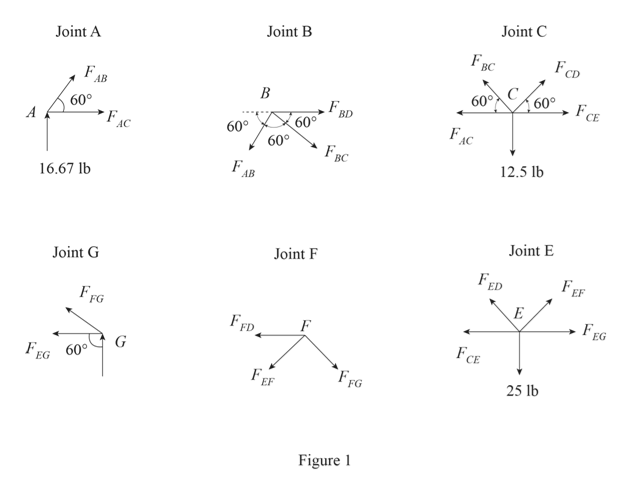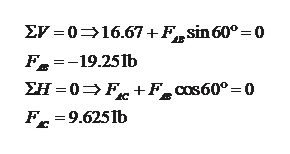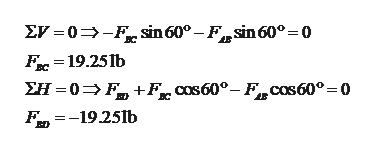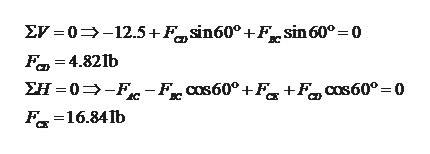8 1o.671b 20.831b Pinned 12.5lb 251b こ04 Pinneed at A, roller roller G. t G
The bridge is pinned at A and has a roller at G. A downward load of 12.5 lb is applied at point C, and a downward load of 25 lb is applied at E. The support reactions at the pin and roller are shown on the image. Find the stress in members making up the bridge using either the method of joints or method of sections.

Find the forces in the member using method of joints:
Initially consider all the member forces are acting outwards (tension) at each joint and resolve the forces using equilibrium equations. While resolving forces, roughly sketch the free body diagram of each joint for ease to understand.
Consider upward force as positive, downward force as negative, left as positive and right as negative.
If the resultant force is negative, then the member is in compression.
If the resultant force is positive, then the member is a tension member.
The free body diagram of joint A, joint B, joint C, joint G, joint F, and joint E are shown below:

Consider joint A,
Let the force in the member AB be FAB and the force in the member BC be FBC.

Consider joint B,
Let the force in the member BD be FBD.

Consider joint C,
Let the force in the member CD be FCD and the force in the member CE be FCE.

Step by step
Solved in 9 steps with 7 images









